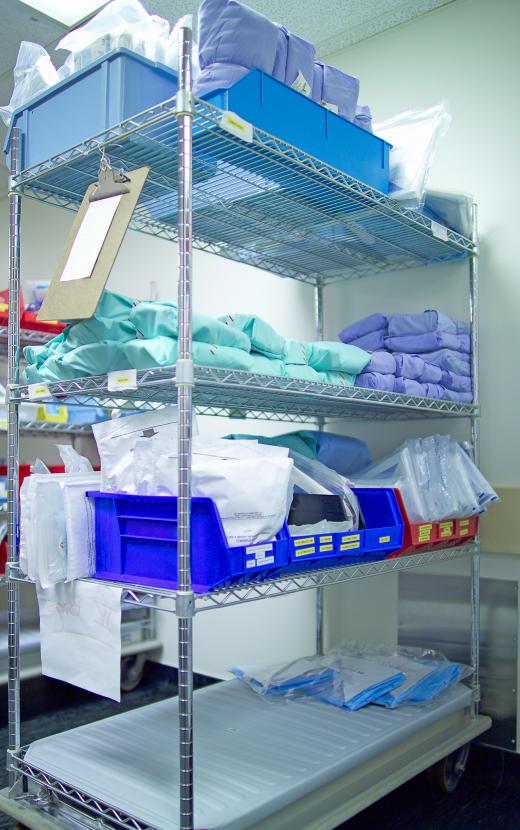What are Lab Coats?
 Michael Pollick
Michael Pollick
Lab coats are protective garments designed to protect the wearers from direct exposure to dangerous chemicals and infectious materials. They are primarily used by medical professionals, research chemists and others who must work around hazardous materials in a laboratory setting. Most are are constructed from tightly-woven cotton, cotton/polyester blends or disposable paper cloth.
Although some may argue that lab coats only serve to keep doctors from being confused with patients, they actually serve several vital purposes. Should a dangerous chemical or an infectious sample splash on the coat, the wearer's skin is mostly protected by the tight weave construction. If a coat becomes saturated, however, it will lose its effectiveness and must be immediately removed. Lab coats must never be cleaned in home washing machines or general purpose laundromats. Only specialists in hazardous waste cleaning techniques should handle them.
Another important function of these garments is protection from fire. Although most lab coats are not designed to be flameproof, they can be quickly removed to isolate the flames.

Like any other safety equipment, lab coats must be worn properly in order to provide any real benefit. Every snap, button or zipper on the coat should be used to avoid stray spills. Sleeves should also extend past the wrists, not rolled up for comfort or ventilation. Some lab coats have openings for access to pants pockets, but this can compromise the wearer's safety. Dirty hands can transfer dangerous or infectious agents through openings in the coats themselves.

Lab coats can also be made from disposable materials like Tyvex. Hospitals and laboratories routinely order disposable versions in bulk from approved contractors. Those made from a blend of polyester and cotton should not have less than a 35% cotton content for maximum benefit. 100% cotton versions may be more durable and launderable, but most non-disposable lab coats rarely last more than a year in regular use. A severely stained or torn coat is a hazard and should be replaced immediately.
AS FEATURED ON:
AS FEATURED ON:















Discussion Comments
Great article. People should definitely know that lab coats are more than just a fancy white coat for a doctor.
Post your comments